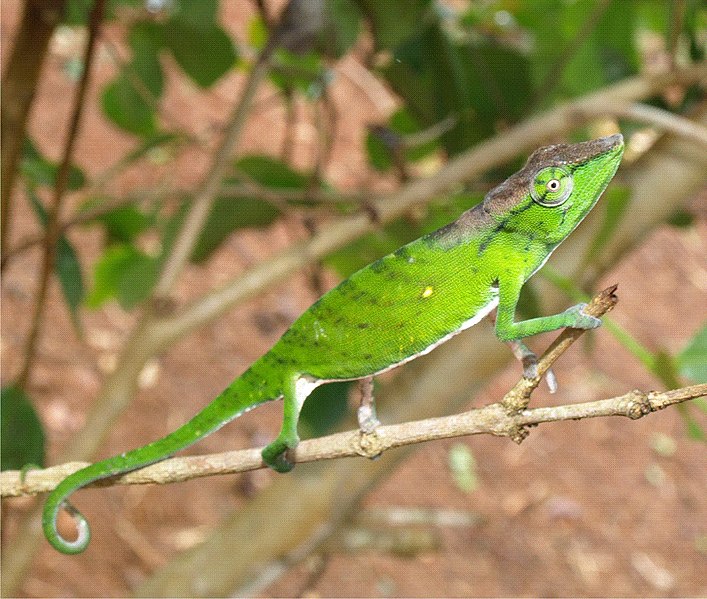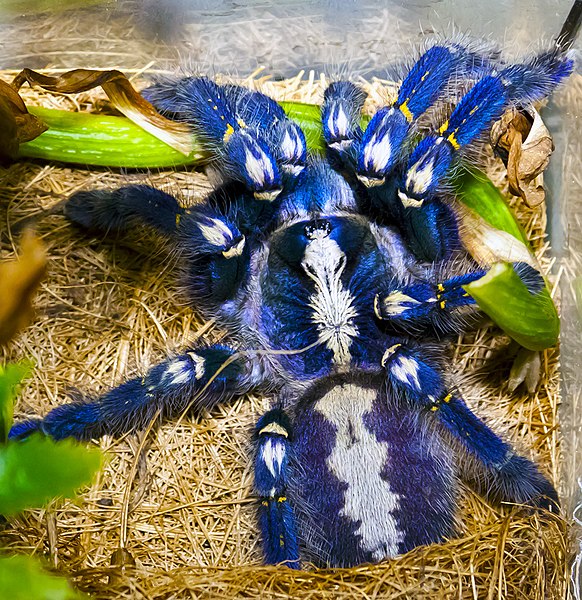 A unique list of species facing imminent extinction was released by the Zoological Society of London at the recent (September, 2012) World Conservation Congress in Jeju, South Korea. As a former member of several IUCN Species Survival Commissions, I was eager to learn the current thinking on the world’s most threatened creatures. I’ll summarize below…any opinions you may have concerning “passed over” species would be most appreciated (please post below).
A unique list of species facing imminent extinction was released by the Zoological Society of London at the recent (September, 2012) World Conservation Congress in Jeju, South Korea. As a former member of several IUCN Species Survival Commissions, I was eager to learn the current thinking on the world’s most threatened creatures. I’ll summarize below…any opinions you may have concerning “passed over” species would be most appreciated (please post below).
I’ve worked with several animals given the dubious honor of “World’s Rarest”, including the Batagur Turtle and Jamaican Iguana, and was heartened to see that zoos and private individuals are still contributing mightily to their protection. However, many of listed species are poorly-studied, and draw few supporters. Unfortunately, two such creatures that I’ve cared for in the past – the Chittenango Ovate Amber Snail and the Tanzanian Spray Toad – are now extinct in the wild.
Worthless or Priceless?
Eight thousand IUCN-based biologists contributed to the report. I was pleased to see that the animals, plants and fungi highlighted provide no readily apparent benefits to humankind. While economic value is an important factor that often spurs action, I think we also need to drive home the point that each species has intrinsic worth, and that all extinctions negatively affect us in some way.
The Pet Trade
Some of the creatures designated as “Most Threatened”, such as the Ploughshare Tortoise, have been both harmed by over-collection and helped by hobbyists who focus on captive reproduction. The Luristan Newt and Peacock Paradise Spider, largely ignored early-on by zoos, are now regularly bred in private collections.
The Threats
While well-known problems such as habitat loss, over-collection, and introduced species continue to plague wildlife, some rarities are threatened for other reasons.
Bullock’s False Toad, for example, is disappearing due to stream alterations undertaken to provide power. Despite extensive surveys, this Chilean amphibian has been seen only twice since 1992. Invasive plants have destroyed the Table Mountain Ghost Frog’s habitat, declining water quality has nearly wiped out the Singapore Freshwater Crab and coral reef destruction threatens the Leaf Scaled Sea Snake’s future.
Following are details for several of the listed species. I’ve focused on those with which I have been involved; you can read the full report here.
Ploughshare Tortoise or Angonoka, Astrochelys yniphora
Although international efforts reduced earlier threats from meat hunters and loggers, pet trade collection continues unabated. The Bronx Zoo received numerous confiscations of Ploughshare Tortoises in the 80’s and 90’s, and there have been recent thefts from Malagasy conservation facilities. Apparently, only one viable wild population remains.
Tarzan’s Chameleon, Calumma tarzan
The three rainforest patches that comprise this species’ entire range measure only 6.2 square miles in total! This brilliant yellow and green Madagascar endemic is protected, but logging roads are being built near its habitat.
Dusky Gopher Frog, Lithobates sevosus
The only US herp on the list, the Dusky Gopher Frog is limited to 6 square miles of habitat in Mississippi. Hopefully, some of what we learned about the captive breeding of close relatives will benefit this frog before its time runs out.
Luristan Newt, Neurergus kaiseri
 Impressed by the efforts of several dedicated amphibian enthusiasts, I and others tried, without success, to interest zoos in keeping these amazing animals when they first appeared in the USA. Brilliantly clad in black, orange and white, Luristan Newts were an immediate hit among private hobbyists, and captive breeding followed. But they face severe threats in the wild. Native to only 3 streams in Iran, dams, introduced fish, droughts, and illegal collection may doom the remaining free-living individuals.
Impressed by the efforts of several dedicated amphibian enthusiasts, I and others tried, without success, to interest zoos in keeping these amazing animals when they first appeared in the USA. Brilliantly clad in black, orange and white, Luristan Newts were an immediate hit among private hobbyists, and captive breeding followed. But they face severe threats in the wild. Native to only 3 streams in Iran, dams, introduced fish, droughts, and illegal collection may doom the remaining free-living individuals.
Red River Giant Soft-shelled Turtle, Rafetus swinhoei
This species may be down to four individuals, two of which reside in China’s Suzhou Zoo. Legendary herpetologist Peter Pritchard has long been involved in Giant Softshell conservation, and I’ve had the good fortune of speaking with him on the subject. I learned that the outlook is grim – efforts to breed the captive pair, initiated in 2008, have not yet been successful. Sadly, despite recent international attention given this turtle’s plight, a wild individual captured in 2010 would up in the food trade.
The Giant Softshell may top 250 pounds in weight, but, being highly aquatic, is difficult to survey; some hope remains (in me, at any rate!) that undiscovered specimens still inhabit the extensive natural range.
Other Listed Species
The “World’s Rarest” are a fantastic group of creatures, many of which are unknown even to experts. Several, such as the Hula Painted Frog, were believed extinct until recently rediscovered. From the Geometric Tortoise to the Rio Pescado Stubfoot Toad, all hold secrets, and all face a dark future. Please see the article below for detailed information on each.
What’s Next…What Can I Do?
 I can attest, from personal experience, that “last-ditch” efforts have averted extinctions. While the Ovate Snails and Spray Toads mentioned earlier now survive only in captivity, others, including the Arabian Oryx and Black-Footed Ferret, have been reintroduced to the wild. The current valiant efforts of zoos and private hobbyists to rescue Southeast Asia’s turtles (please see this article) are responsible for keeping several species from disappearing forever.
I can attest, from personal experience, that “last-ditch” efforts have averted extinctions. While the Ovate Snails and Spray Toads mentioned earlier now survive only in captivity, others, including the Arabian Oryx and Black-Footed Ferret, have been reintroduced to the wild. The current valiant efforts of zoos and private hobbyists to rescue Southeast Asia’s turtles (please see this article) are responsible for keeping several species from disappearing forever.
So don’t lose hope. Support responsible conservation programs in any way you can – please post here if you would like specific information on how to do this – and don’t forget to list those species that concern you most; after all, far more than 100 are in dire need of out help.
Further Reading
Priceless or Worthless? (IUCN report text and photos)
New Standard to Measure Species’ Status
Bullock’s False Toad Conservation
Red River Giant Soft-shelled Turtle
Tarzan’s Chameleon image referenced from wikipedia and originally posted by Sebastian Gehring
Poecilotheria metallica image referenced from wikipedia and originally posted by MLursus
Neurergus kaiseri image referenced from wikipedia and originally posted by Dr. Richard Bartlett
 That Reptile Blog – Reptile, Amphibian and Exotic Pet Care and Information
That Reptile Blog – Reptile, Amphibian and Exotic Pet Care and Information


